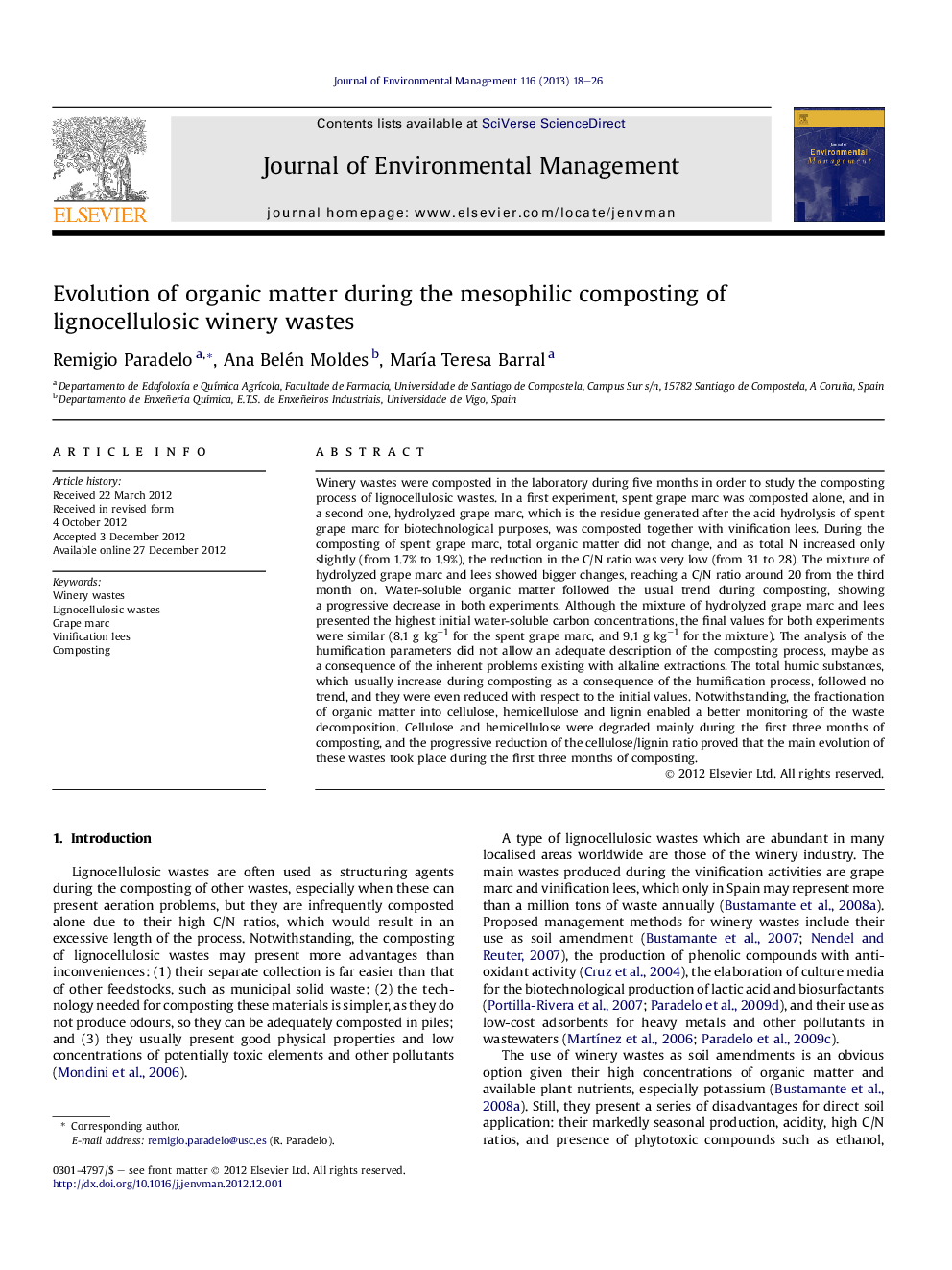| کد مقاله | کد نشریه | سال انتشار | مقاله انگلیسی | نسخه تمام متن |
|---|---|---|---|---|
| 1056377 | 1485296 | 2013 | 9 صفحه PDF | دانلود رایگان |

Winery wastes were composted in the laboratory during five months in order to study the composting process of lignocellulosic wastes. In a first experiment, spent grape marc was composted alone, and in a second one, hydrolyzed grape marc, which is the residue generated after the acid hydrolysis of spent grape marc for biotechnological purposes, was composted together with vinification lees. During the composting of spent grape marc, total organic matter did not change, and as total N increased only slightly (from 1.7% to 1.9%), the reduction in the C/N ratio was very low (from 31 to 28). The mixture of hydrolyzed grape marc and lees showed bigger changes, reaching a C/N ratio around 20 from the third month on. Water-soluble organic matter followed the usual trend during composting, showing a progressive decrease in both experiments. Although the mixture of hydrolyzed grape marc and lees presented the highest initial water-soluble carbon concentrations, the final values for both experiments were similar (8.1 g kg−1 for the spent grape marc, and 9.1 g kg−1 for the mixture). The analysis of the humification parameters did not allow an adequate description of the composting process, maybe as a consequence of the inherent problems existing with alkaline extractions. The total humic substances, which usually increase during composting as a consequence of the humification process, followed no trend, and they were even reduced with respect to the initial values. Notwithstanding, the fractionation of organic matter into cellulose, hemicellulose and lignin enabled a better monitoring of the waste decomposition. Cellulose and hemicellulose were degraded mainly during the first three months of composting, and the progressive reduction of the cellulose/lignin ratio proved that the main evolution of these wastes took place during the first three months of composting.
► Winery wastes were composted during five months to study the process of composting.
► Composting proceeded without important changes in temperature or chemical parameters.
► Cellulose, hemicellulose and lignin fractionation was the best indicator of composting.
Journal: Journal of Environmental Management - Volume 116, 15 February 2013, Pages 18–26